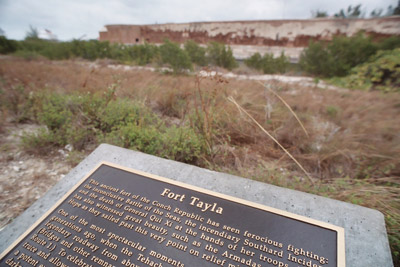
To celebrate the upcoming collected stories concert series curated by David Lang at Carnegie Hall (April 22-29), we’ll be posting pieces from past issues of the Believer that tie into with the themes of each show. The third concert in collected stories is (post)folk, featuring Alarm Will Sound, Alan Pierson, and Jennifer Zetland, for which we’re posting Michael A. Elliott’s essay on the Kcymaerxthaere, the fictional universe created by Eames Demetrios (from the November/December 2009 issue of the Believer).
THE GRANDSON OF THE DESIGNERS OF THE MOST FAMOUS PIECE OF MODERN FURNITURE MEMORIALIZES THE SLOW DEATH OF MAIN STREET BY BUILDING AN ALTERNATE UNIVERSE.
DISCUSSED: Non-Native Elvish Speakers, The Kcymaerxthaere, Three-Dimensional Storytelling, The Battle of Some Times, The Limits of the Assembly Line, The Parisian Diaspora, Teri’s Threads, The Conditions of an Ideal Spot for Reverie
The brick courtyard was adjacent to the railroad tracks on Atlanta’s industrial west side—and part of a structure that had been transformed from its industrial roots to become the home of a five-star restaurant. I must have taken a wrong turn, because instead of finding the bathroom, I ended up staring at a bronze plaque that had been welded into the concrete abutting the building’s electrical boards. It looked just like one of the historical markers scattered throughout the South to mark every scrape and scuffle of the Civil War.
But this one wasn’t like that. “When the Tehachapi incised the Adalanta Desert with the two great sphaltways,” it began, “a settlement at their junction was inevitable.” On this spot, the plaque explained, a woman named Martha Pelaski built her trading post, the location for a series of historic meetings between people with names I didn’t recognize: Nobunaga-gaisen, Iglesia Guitierrez, Síawm Chd. For a second I thought that the local historical society must have been infiltrated by one of those people who prefer to read The Lord of the Rings in Elvish. I looked around to see if this was a joke, and if there was something else nearby that could let me in on it. There wasn’t.
I had stumbled onto the Kcymaerxthaere.
The Kcymaerxthaere is a vast alternate universe created by Eames Demetrios, a California-based artist and filmmaker who began installing the plaques in 2003. The premise of the project is that the Kcymaerxthaere exists as its own parallel world, but its remnants are often visible in our own, “linear” world—intersections that Demetrios endeavors to commemorate by physically marking their presence.
He has already installed over sixty of these faux historical markers, and hopes to increase that number to seventy by the year’s end. Most are in the United States (that is, Kymaerica),...
You have reached your article limit
Sign up for a digital subscription and continue reading all new issues, plus our entire archives, for just $1.50/month.
Already a subscriber? Sign in




